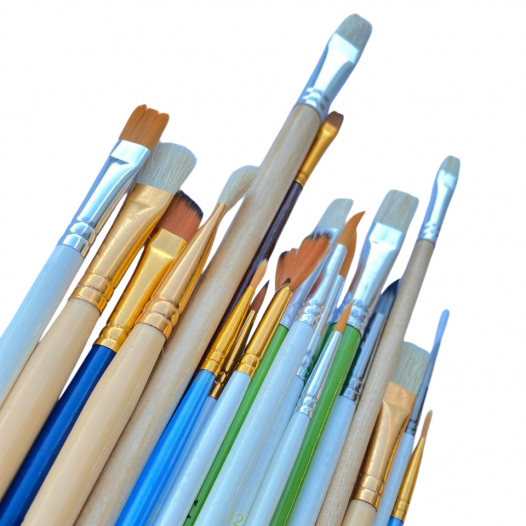- Art & Craft
- No Comment
Which Brush Is Used While Painting with Watercolour ?

What makes the watercolour painting interesting is the watercolour painting technique that results in smooth and semi-transparent artwork. The technique which this kind of piece provides for paints offers excellent smooth tones and fine lines; however, such effects depend on the brush with which you work. Although each kind of technique requires brushes of a different shape and size.
The brush you use for the finishing touch can take your watercolour artwork from good to great. As for what it does help with, it contributes to setting the colours apart and making details look clean-cut; it also makes applied lines thin and smooth and gives that final polish. So, how do we decide which one is best for finishing when there are thousands of watercolour paintbrush sets available?
Characteristics of Brush Used For Watercolour
There are several key features to consider when picking a brush for your watercolour paintings:
- Tip Shapes: It refers to the form or end of a brush’s bristles. Different tip shapes offer varying degrees of control and versatility in watercolour painting. Some common tip shapes include:
- Round: Offering a good balance of control and line variation.
- Flat: Ideal for creating broad strokes and flat washes.
- Filbert: A combination of round and flat, offering control for both lines and washes.
- Angular: Perfect for creating sharp lines and precise details.
- Fan: Used for creating soft washes and blending effects.
- Bristle type: It refers to the material used to make the hair or fibres in a paintbrush. Different bristle types have varying properties that affect the brush’s performance, including water retention, responsiveness, and durability. Some common bristle types include:
- Natural Hair
- Synthetic hair
- Water retention: It refers to a brush’s ability to hold and release water effectively. A brush with good water retention can deliver smooth washes and consistent strokes, while a brush with poor water retention may struggle to maintain a consistent flow of paint.
Factors that influence water retention include:
- Bristle type: Natural hair brushes, such as sable and squirrel, generally have better water retention than synthetic brushes.
- Bristle Density: Denser bristles can hold more water, but they may also be less responsive to the artist’s touch.
- Brush Shape: The shape of the brush can affect how well it holds and releases water. For example, a round brush with a tapered tip can hold more water than a flat brush with a blunt tip.
Perfect Brushes for the finishing Touch
Here’s a look at some of the watercolour paint brush sets available that excel in finishing touches:
- Cowling and Wilcox exclusive watercolour brush set
For watercolour artists, these single-stroke brushes are the gold standard. Each brush has smooth, rust-proof ferrules and a long, black handle that has been polished. This wonderful set comes with four round brushes in sizes 2, 6, 7, and 8, as well as one flat brush in size 5.
- Winsor & Newton foundation watercolour brush set
Round brushes are useful for lines and fine detail work because they offer a unique control. Soft-edged, broad strokes work well with filberts. The edge of the brush can be used for line work, while flat brushes work great for big, sweeping strokes.
- Da Vinci series 5249 watercolour brush set
This high-quality watercolour paint brush set is perfect for painting with watercolour, silk, and ink. Two circular brushes, sizes 2 and 4, are included. These two brushes together provide you with all the tools you need to paint in watercolour.
Be sure to explore the collection of paint brush sets to enhance your watercolour painting skills. With the right tools in hand, your finishing touches will shine, bringing your artistic vision to life.